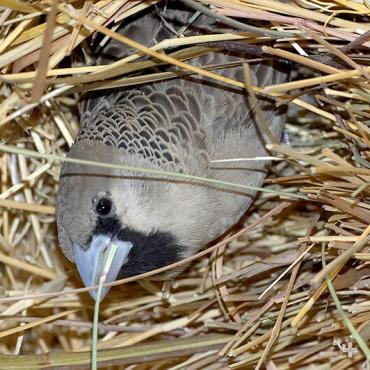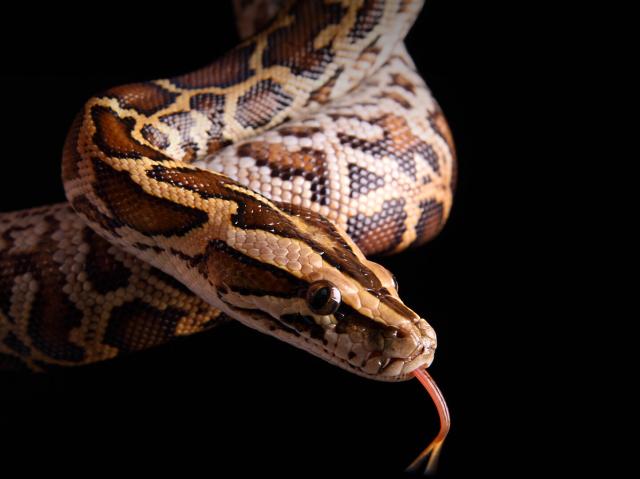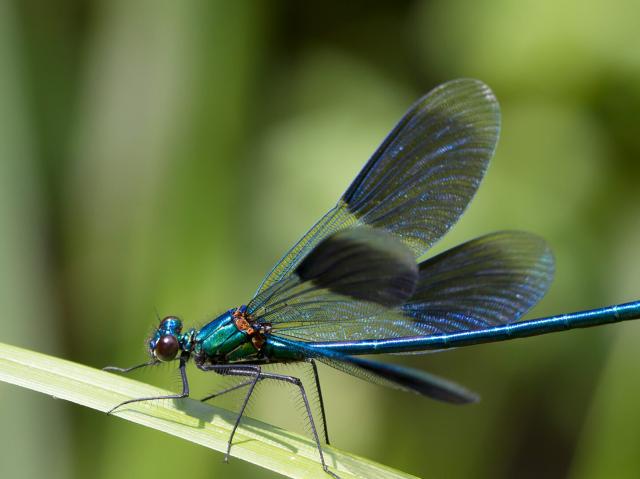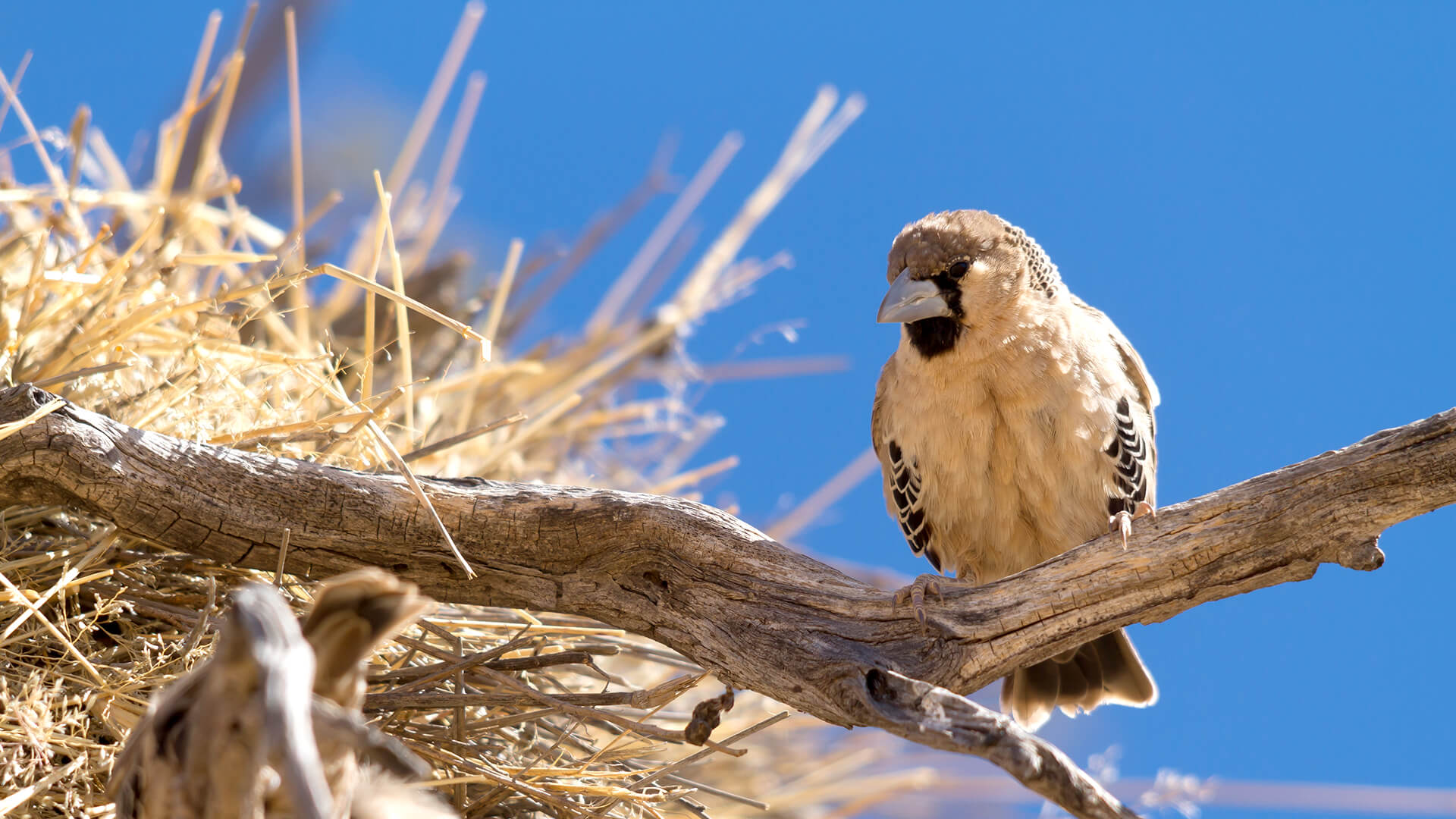
Sociable Weaver

- CLASS: Aves (Birds)
- ORDER: Passeriformes
- FAMILY: Ploceidae
- GENUS: Philetarius
- SPECIES: socius

ABOUT
Weaver world wonders: The sociable weaver is a common little brown bird in the Kalahari region of southern Africa. Yet this sparrow-sized critter may be one of the most interesting birds in the world! Sociable weavers are unlike most other birds due to their lifestyle and nest building. They weave one nest for their entire colony as well as for future residents.
This is no ordinary nest—it is massive, like a giant apartment block occupied by up to 100 sociable weaver families all year long. Some sociable weaver nests have remained occupied for over 100 years!
From a distance, the sociable weaver nest may resemble a haystack hanging in a tree. But if you crawl under the nest and look up, you can see the entrances to the different chambers within the nest. It's sort of like a bee's honeycomb. Nest entrance tunnels can be up to 10 inches (25 centimeters) long and 3 inches (7 centimeters) wide. Round, cozy nesting chambers are usually 4 to 6 inches (10 to 15 centimeters) in diameter. There may be 5 to 100 nesting chambers in a single sociable weaver nest, providing a home for 10 to 400 birds!
When building the nest, sociable weavers use different materials for different purposes. Large twigs form the roof of the nest and dry grasses create the separate chambers. Sharp spikes of straw protect the entrance tunnels from predators. Nesting chambers are lined from top to bottom with soft plant material, fur, cotton, and fluff. A proper nesting tree has a long, smooth trunk and high branches to discourage slithering predators such as Cape cobras and boomslangs, a type of tree snake.
Other predators include the honey badger and pygmy falcon. For some sociable weavers in Africa, the perfect nest-building tree has become a utility or telephone pole.
Weaver nests need constant care because of the nature of the materials used. Weavers continually add more material to keep the nest intact. The birds may seem like clever artisans with their nest-building ability. But sociable weavers build or add to their nest instinctively—they don't need to be taught to create a dwelling place the same way their ancestors have done.
HABITAT AND DIET
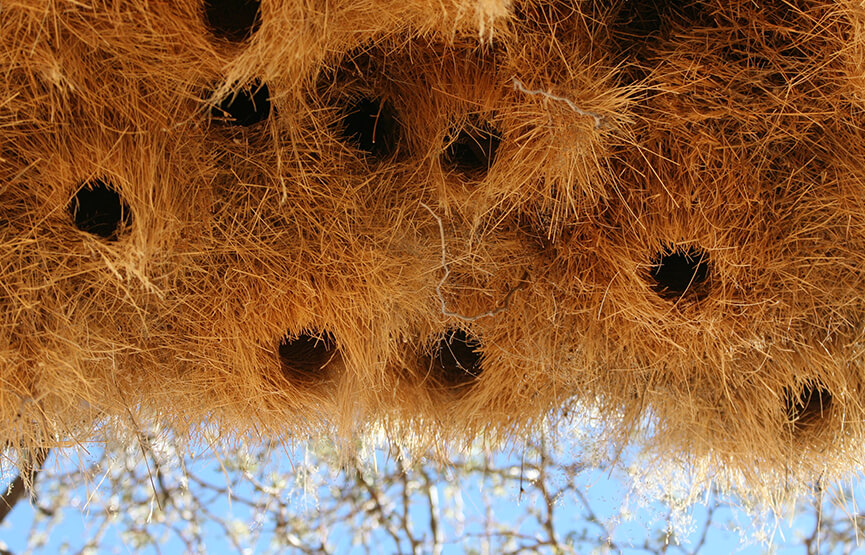
A climate-controlled nest: Large nests help the sociable weavers stay comfortable in the harsh climate of the Kalahari Desert. During freezing winter nights, a move to the nest’s well-insulated center chambers helps the little birds stay warm. Scorching summer temperatures are easier to weather when roosting in one of the outer chambers of the nest.
The sociable weaver’s nest sees plenty of guests—a regular Kalahari Desert inn! The South African pygmy falcon relies completely on the sociable weavers’ nest for its own home, often nesting side by side with the sociable weavers. The pied barbet, familiar chat, red-headed finch, ashy tit, and rosy-faced lovebird often find comfort in the cozy nesting chambers, too. Vultures, owls, and eagles often roost on the nests’ broad roof.
Why are weavers willing to share the huge nest they worked so hard to make? More residents mean more eyes keeping a watch for danger. And the weavers often learn from the other birds where there are new sources of food.
Sociable weavers need less water than any other bird. Most never take a drink, getting all the moisture they need from their food: bugs. Insects make up 80 percent of their diet, and juicy harvester termites are a favorite. The rest of the sociable weaver diet is seeds from grasses. Most of their food is collected while the birds are on the ground, but they are able to catch insects in flight, too.
At the San Diego Zoo, the weavers get crickets, fly and mealworm larva, finch seeds, tropical fruit, and chopped greens.
FAMILY LIFE
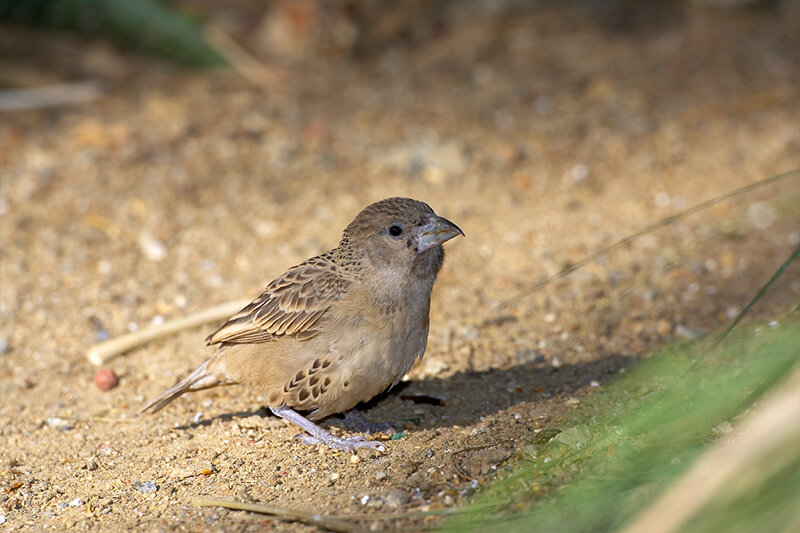
All in the family: With so much family under one well-thatched roof, Mom and Dad have lots of helpers for the new chicks. Two to six tiny spotted eggs are laid in a clutch. Both parents take turns incubating the eggs until they hatch in two weeks. Juvenile sociable weavers provide food for their younger siblings for the next three weeks when they fledge. Parents even provide insects for their neighbors’ young. Studies have shown that chicks raised with helpers have a better chance at surviving than those raised by the parents alone.
And can you imagine never moving away from home? Sociable weavers do not migrate; in fact, chicks may never leave the nest. Fledgling chicks might just move to an empty nesting chamber nearby.
Building such a huge nest is no simple task for such a small bird, which is why it is important for them to be in constant communication as they maintain their group home. Their chatter can be heard from several yards away.
In addition, sociable weavers have a staccato threat call. A long call is used to announce their arrival to the nest. An alarm call is a harsh, single note.
CONSERVATION
Fortunately, sociable weaver populations are currently stable. By supporting San Diego Zoo Wildlife Alliance, you are our ally in saving and protecting wildlife worldwide.
LIFE SPAN
Unknown
YOUNG
Number of eggs laid: 2 to 6
Incubation period: 12 to 14 days
Weight at hatch: .07 ounces (2 grams)
Age at fledge: 14 to 16 days
Age of maturity: 16 to 18 weeks
SIZE
Height: 5.5 inches (14 centimeters) tall
Weight: .8 to 1.13 ounces (24 to 32 grams)
FUN FACTS
Some sociable weaver nests weigh several tons and can get so heavy they knock down the supporting tree.
The largest sociable weaver nests are over 20 feet (6 meters) wide and close to 10 feet (3 meters) tall, with more than 100 individual nesting chambers.
Record holder: the sociable weaver is the builder of the largest tree nests in the world.




